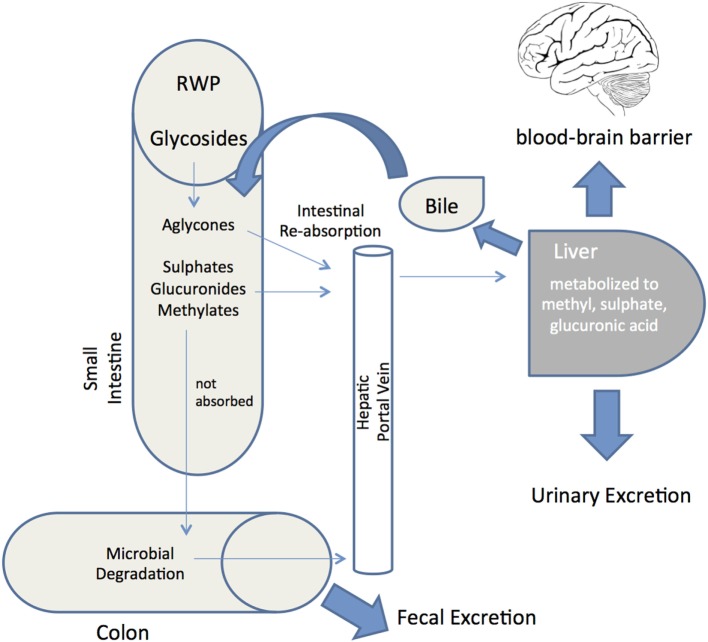Figure 3.
Red wine polyphenols metabolism and absorption in the human digestive system. Schematic depiction of the metabolic fate of red wine polyphenols (RWP) after ingestion into the gastrointestinal tract. Following ingestion, enzymes hydrolyze glycosylated RWP and then aglycones enter epithelial cells by passive diffusion. RWP that are not absorbed reach the colon and proceed to microbial degradation before colonic absorption. Once a final derivative or aglycon has been absorbed it undergoes phase I/II metabolism at enterocyte level to produce sulfates, glucuronides and methylates. These metabolites then enter the blood stream by the portal vein, reaching the liver, where they may be subjected to more phase II metabolism, thence becoming conjugated and transported to the bloodstream again until they are secreted in urine. Some of the liver conjugates are excreted as bile components back into the small intestine (enterohepatic circulation). Unabsorbed metabolites are eliminated via feces. Bioavailability is defined as the percentage of a RWP that is absorbed into the bloodstream and available to exert its effect at the target tissue (brain through the blood–brain barrier).

